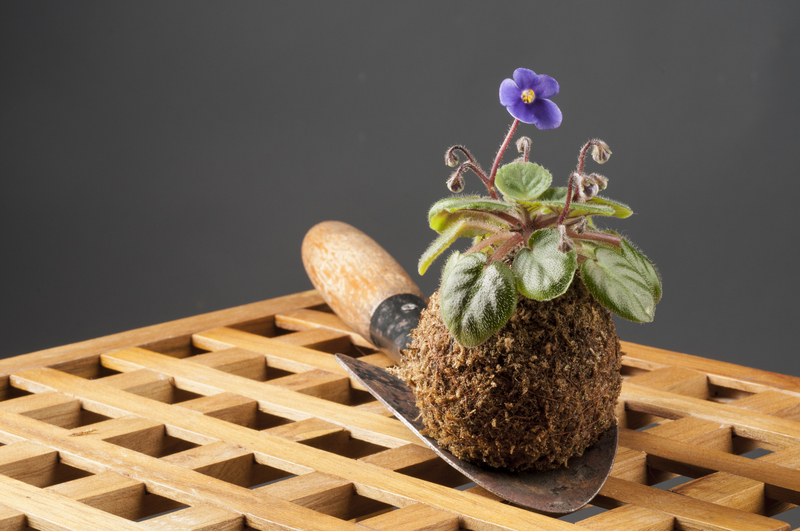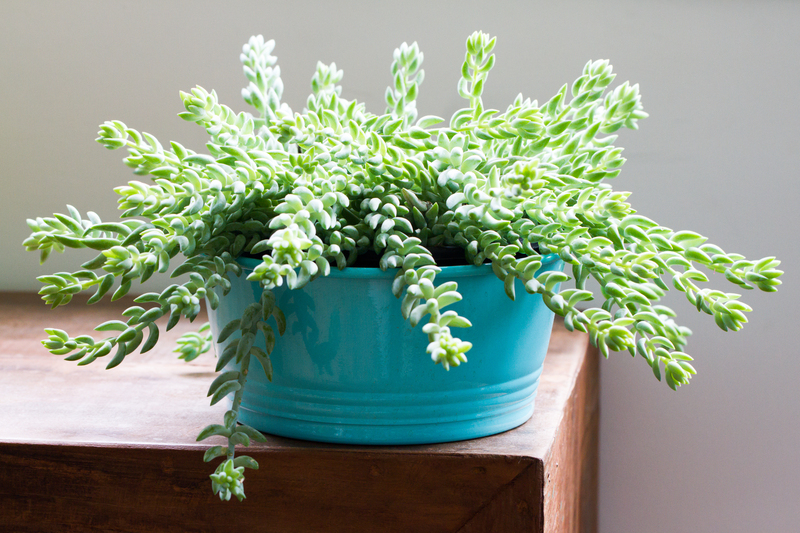Rediscovering Serenity: Starting a Garden Transformation
Posted on 18/08/2025
Rediscovering Serenity: Starting a Garden Transformation
In our fast-paced world, it has become increasingly important to carve out pockets of peace where we can escape daily stress. One such haven lies just outside your door: your garden. Rediscovering serenity through a garden transformation offers not only a restorative retreat for your mind and body but also enhances your connection with nature. This comprehensive guide explores the journey of beginning a garden transformation, offering actionable advice and inspiration for those ready to create a tranquil outdoor sanctuary.
Why Transform Your Garden?
Imagine stepping into your backyard and being greeted by the sights and sounds of flourishing nature. A garden restoration goes beyond aesthetics; it's about reclaiming a space for well-being, creativity, and sustainability. Here are some compelling reasons to consider embarking on a garden revamp:
- Mental Well-Being: Nature has proven therapeutic effects, helping to lower stress and boost mood.
- Physical Health: Gardening encourages physical activity, increasing strength and flexibility.
- Environmental Benefits: Cultivating plants improves air quality and supports biodiversity.
- Home Value: An attractive garden can enhance your property's curb appeal.
- Personal Fulfillment: The act of nurturing a garden brings deep satisfaction and a sense of accomplishment.
Initial Steps to Uncover Serenity Through Garden Transformation
Starting your garden transformation begins long before you pick up a spade. It's about vision, planning, and cultivating a connection with your outdoor space. Here's how to get started:
Step 1: Assess Your Space
Walk through your garden with fresh eyes. Note the current condition of your outdoor area--consider elements like soil quality, sunlight, existing plants, and any architectural features. Is there an area that receives morning sunlight or a secluded corner perfect for a meditation bench? Sketch a basic layout and jot down what you love and what you'd like to change.
Step 2: Set Your Intentions and Goals
Serenity means different things to different people. Ask yourself: Are you seeking a lush green oasis, a productive edible garden, or a minimalist Zen-inspired retreat? Setting clear intentions will help guide your choices and design.
- Do you want a space for social gatherings or quiet contemplation?
- Are you interested in attracting wildlife, like birds and butterflies?
- Is low maintenance a top priority?
Your answers will shape everything in your garden transformation journey, from design to plant selection.
Step 3: Plan Your Garden Design
Now, it's time to bring your vision to life. Garden design involves more than just choosing flowers; it's about creating harmony, flow, and balance. Use these principles as your guide:
- Structure and Focal Points: Add elements like pergolas, pathways, or water features to define spaces and add visual interest.
- Layers and Texture: Mix shrubs, perennials, and ground covers for a multi-dimensional effect.
- Color Palette: Choose soothing hues--such as greens, blues, and whites--to enhance the feeling of calm.
- Movement: Incorporate grasses or plants that sway gently in the wind for a dynamic, tranquil atmosphere.
- Functionality: Designate zones for dining, lounging, or growing food to accommodate your lifestyle.
Step 4: Choose Plants for Serenity
Plant selection is key to a successful garden makeover. Opt for varieties that thrive in your climate and match your desired maintenance level. Consider the following:
- Evergreen shrubs for year-round structure.
- Herbs and aromatic plants like lavender or rosemary for fragrance.
- Perennials for long-lasting color with minimal replanting.
- Native plants to support local wildlife and pollinators.
- Bamboo or ornamental grasses to introduce movement and rustling sound.
Don't overlook container gardens or raised beds--they're excellent for small spaces or renters!
Step 5: Prepare the Ground
Before planting, prep your soil to give your new garden the best possible start.
- Test soil pH and fertility.
- Amend with compost or organic matter to improve texture and nutrients.
- Clear out weeds and debris.
- Install edging to define garden beds and prevent grass encroachment.
Step 6: Start Planting and Building
Follow your plan and begin planting. Layer plants by height and texture for a natural look. Add hardscape features like benches, stepping stones, or sculptures where desired. Take your time--transforming your garden is a journey, not a sprint.
Key Features for a Serene Garden Retreat
When pursuing garden tranquility, certain elements can elevate your space from ordinary to extraordinary:
- Water Features: The sound of flowing water, whether from a simple fountain or pond, soothes the senses and drowns out urban noise.
- Seating Areas: Comfortable spaces for reading, reflecting, or gathering with friends invite continued enjoyment.
- Wildlife-Friendly Elements: Bird baths, bee hotels, or butterfly-friendly plants attract beneficial creatures and inspire a connection with nature.
- Shade and Shelter: Arbors, pergolas, or large trees provide respite from the sun and create intimacy.
- Lighting: Solar lanterns, string lights, or flame torches extend usability into the evening while adding enchantment.
Low Maintenance Ideas for Continued Serenity
For many, a serene garden is one that doesn't demand constant work. Choose:
- Drought-tolerant plants and mulch to minimize watering.
- Ground covers to suppress weeds naturally.
- Automatic irrigation systems for regular moisture without effort.
- Slow-growing shrubs that require minimal pruning.
- Hardscape for a balance of green and manageable surfaces.

Benefits of Rediscovering Serenity with a Garden Makeover
Undertaking a garden transformation project is about much more than aesthetics. The process is deeply therapeutic and can yield measurable improvements in your well-being.
- Mental Health: Repetitive garden tasks encourage mindfulness, while contact with nature reduces anxiety.
- Physical Fitness: Activities like digging, planting, and weeding build strength and flexibility.
- Sustainability: Homegrown produce, rainwater harvesting, and composting contribute to eco-friendly living.
- Connection and Community: Gardens foster connections with neighbors and family through shared care and enjoyment.
- Inspiration and Creativity: Designing and cultivating a garden stimulates creative thinking and problem-solving.
Seasonal Tips for a Year-Round Sanctuary
Maintaining ongoing serenity means embracing the dynamic nature of gardening. Each season brings new opportunities:
- Spring: Prune shrubs, begin sowing seeds, and refresh mulch layers.
- Summer: Focus on watering, deadheading spent blooms, and enjoying peak color.
- Autumn: Plant bulbs for next year, gather falling leaves for compost, and protect tender plants.
- Winter: Assess design while leaves are down, plan new projects, and provide for birds and wildlife.
Modern Trends in Garden Transformation
Garden makeovers today blend tradition with innovation. Consider incorporating these trends:
- Wildlife-friendly planting and pollinator corridors for ecological balance.
- Edible landscapes that combine ornamental and practical.
- Naturalistic planting schemes for a relaxed, organic look.
- Low-impact materials such as recycled paving or timber.
- Vertical gardens and balcony-friendly designs for small spaces.

Rediscovering Serenity: Personal Stories and Inspiration
For many, rediscovering serenity through a garden transformation has been a life-changing journey. Here are a few short stories from enthusiasts who revitalized their outdoor spaces:
- After years of city living, Sarah created a tiny urban garden on her apartment balcony, using containers and trellises. She now starts every morning among her blooms, finding a peaceful moment before her busy workday begins.
- Tom inherited a neglected backyard but saw potential. By planting native species, he attracted songbirds and butterflies--making his garden a thriving ecosystem and a source of inspiration for his photography.
- Melissa installed a simple water feature and a few comfortable chairs beneath her old oak tree. Her backyard is now the family's favorite place to unwind and reconnect--away from screens.
Expert Tips for a Successful Garden Restoration
- Start Small: It's easy to feel overwhelmed. Begin with one area, then expand as your confidence grows.
- Focus on Soil: Healthy soil is the foundation of any beautiful and resilient garden.
- Mix Evergreens and Deciduous: This ensures year-round interest and structure.
- Plan for Growth: Leave space for plants to mature--overcrowding is a common regret.
- Celebrate Progress: Take photos and celebrate each milestone on your garden makeover journey.
Rediscover Your Garden, Rediscover Yourself
Your outdoor space can be so much more than just a patch of lawn or flowerbeds. A garden restoration is a powerful step toward restoring inner serenity and mindfulness. Every seed you plant, path you design, or bird you attract is a victory for well-being. If you're ready to embrace tranquility and beauty, start planning your garden transformation today.
Transforming your garden is an act of self-care, creativity, and connection with the natural world. Whether you're new to gardening or an experienced green thumb, rediscovering serenity in your garden promises rewards that last a lifetime.
Conclusion: Begin Your Serene Garden Transformation Today
Rediscovering serenity by starting a garden transformation is a deeply rewarding endeavor. By assessing your space, setting intentions, and embracing thoughtful design, you can cultivate an outdoor retreat that nurtures body, mind, and soul. With every season, your garden will mature and reveal new layers of beauty and peace, accompanying you on a lifelong journey of renewal.
Ready to take the first step? Start your journey today--because serenity is waiting, just outside your doorstep.

